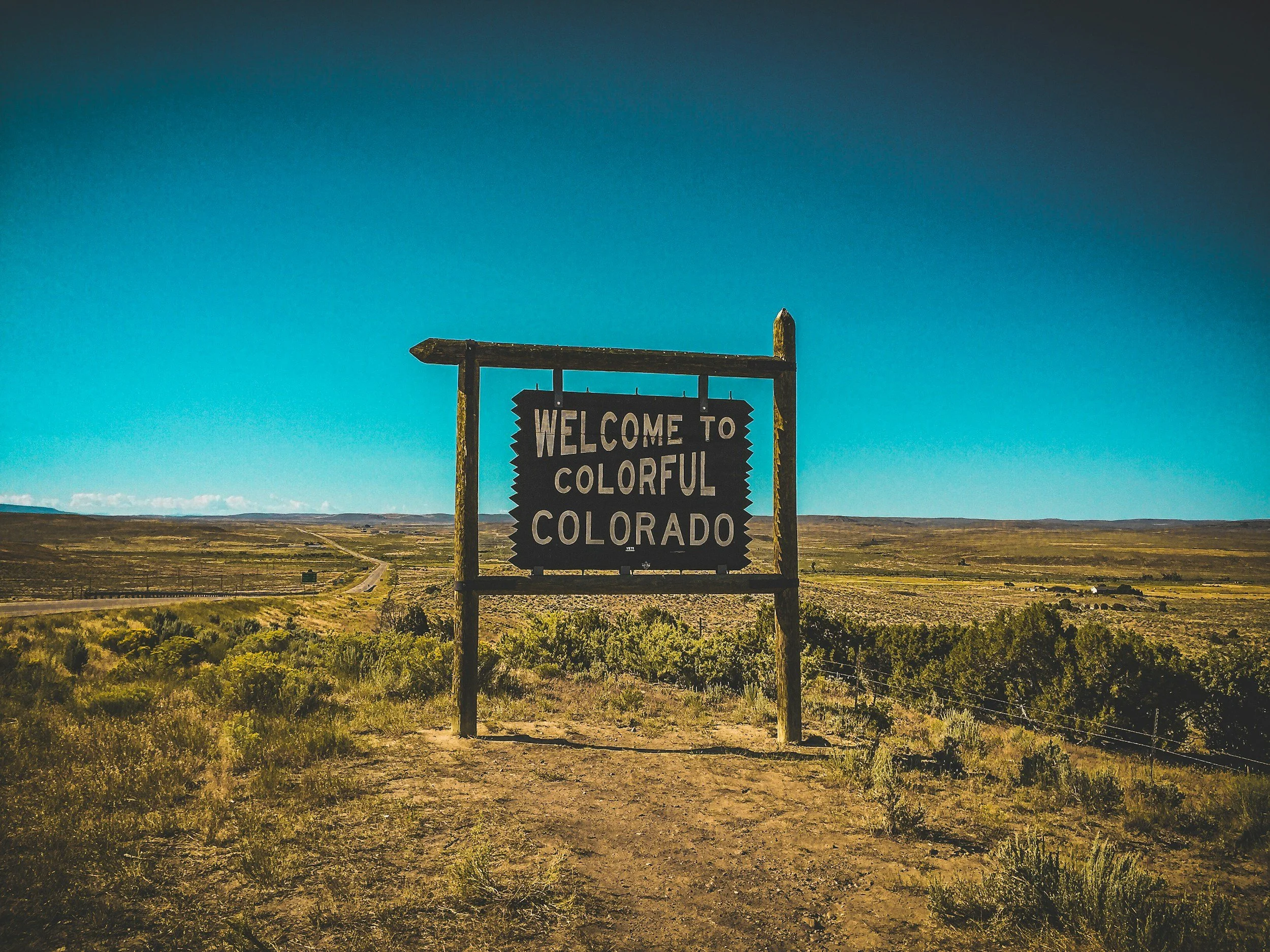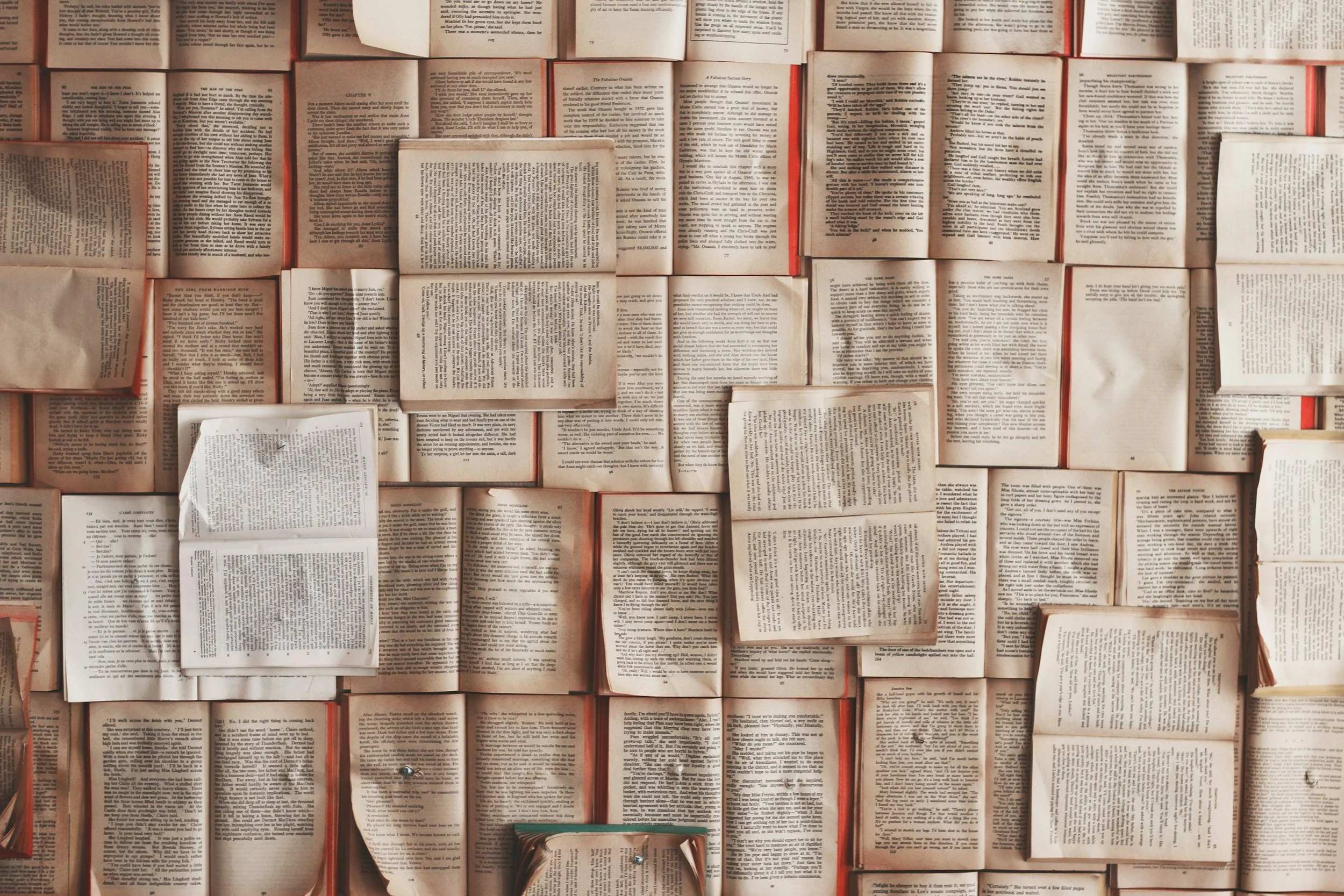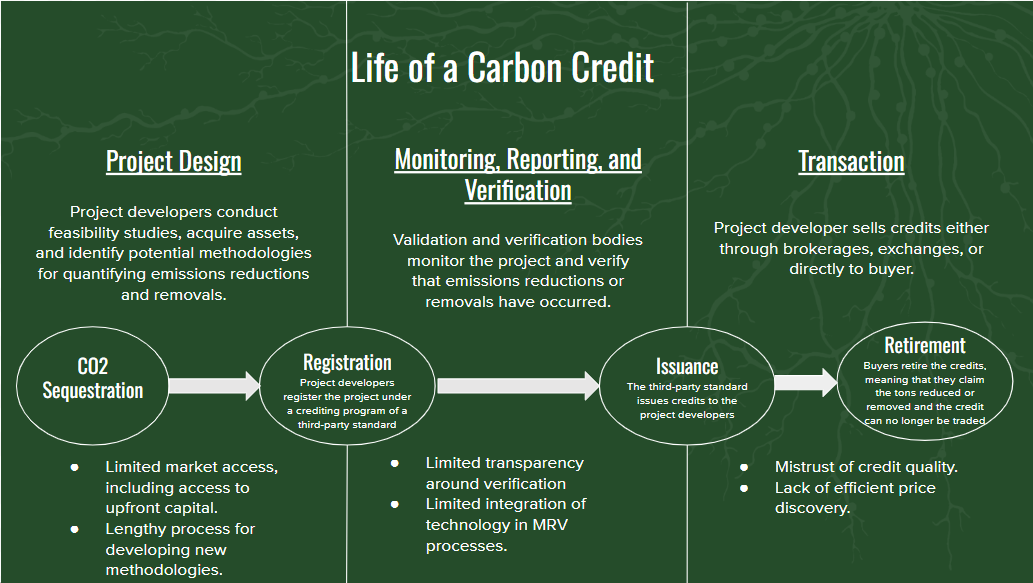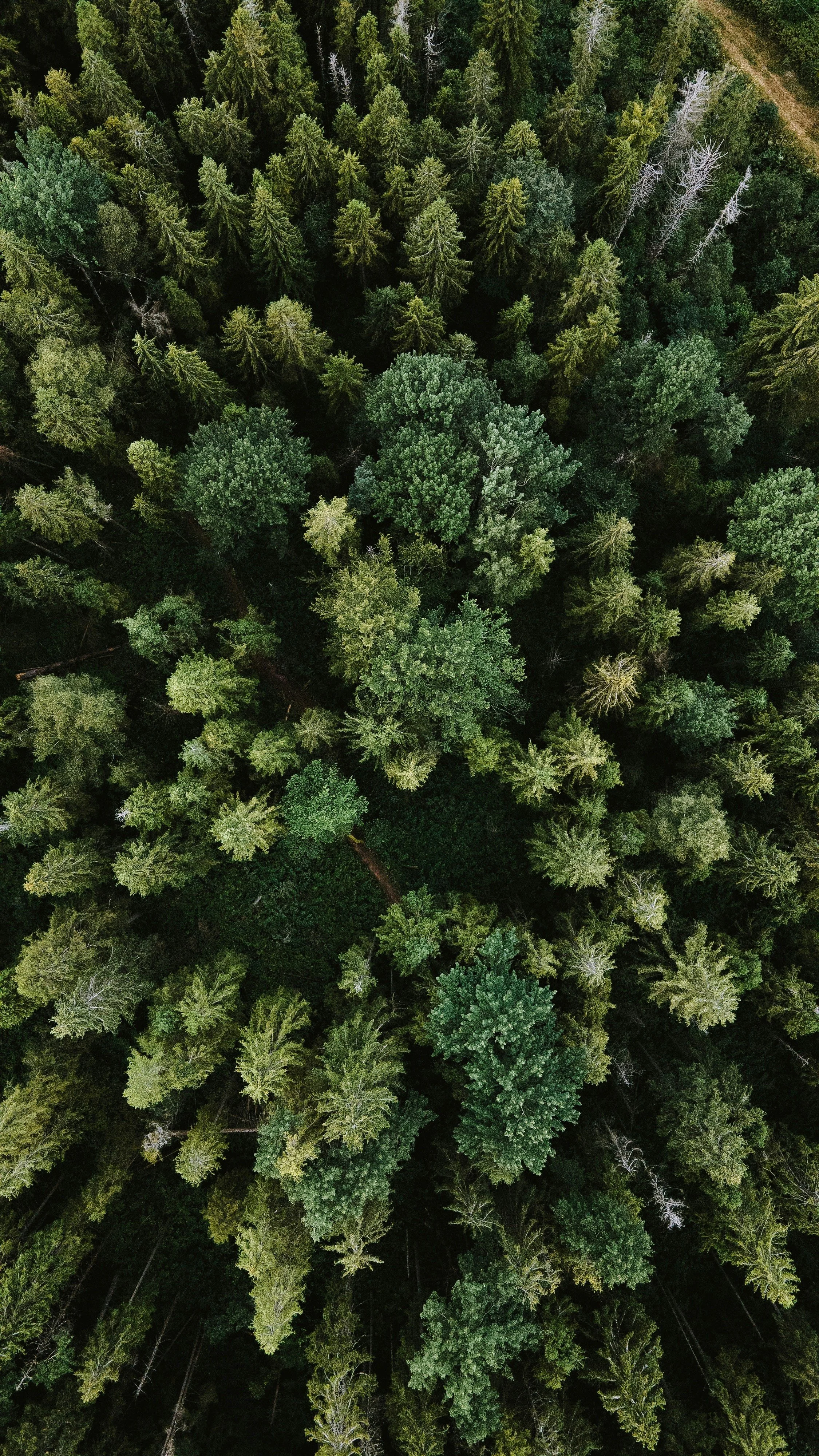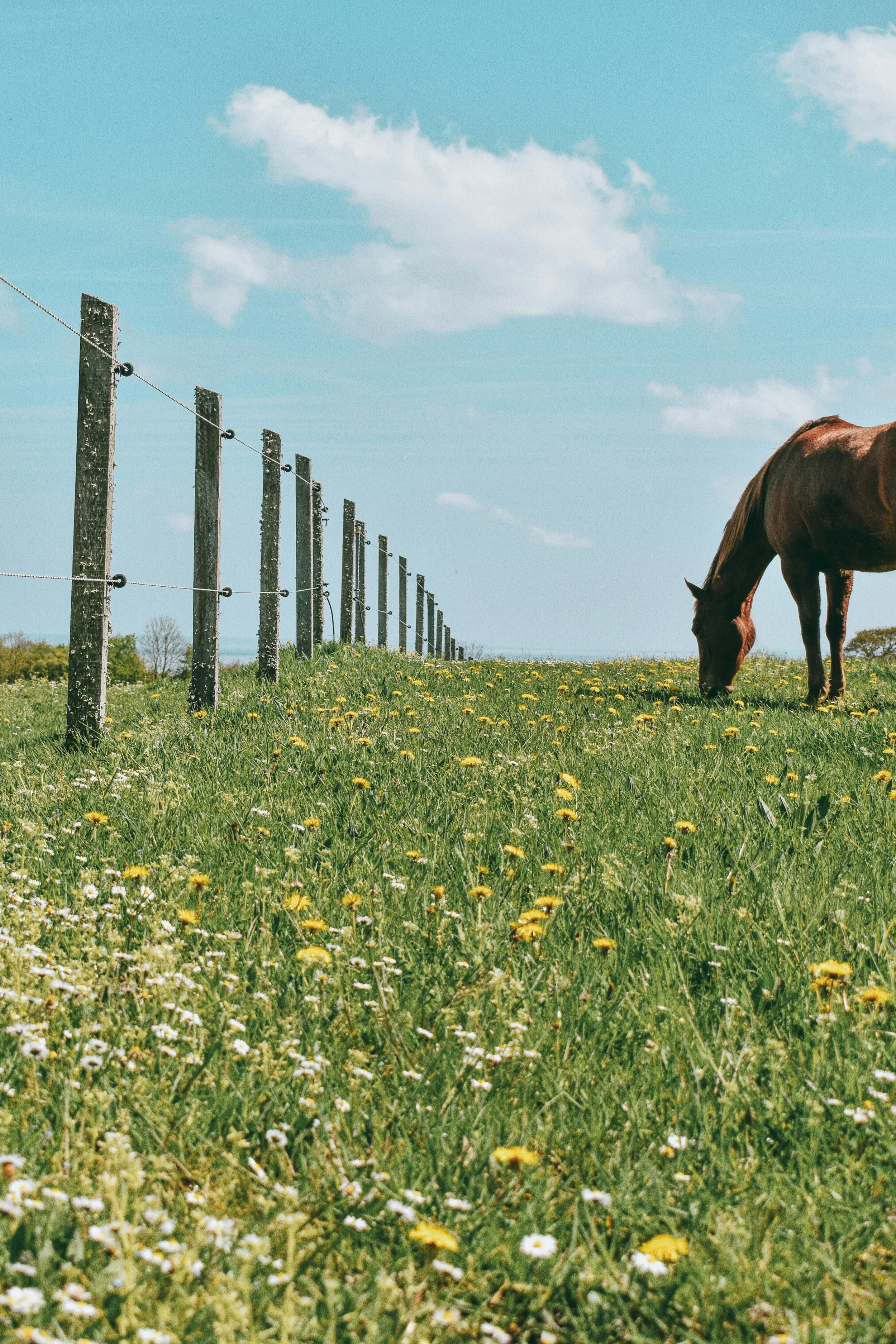Carbon Finance:
A Resource Guide for
Colorado Producers
CSU’s Soil Carbon Solutions Center designed this resource guide to help stakeholders make informed decisions on carbon sequestration activities. Specifically tailored for regional producers, the guide is designed as a one-stop shop for information on carbon finance, to learn more and weigh risks and benefits of market participation.
If you are new to the concept of carbon markets and finance, you can start with our background guide here.
The Soil Carbon Solutions Center shares these resources for information only and does not endorse any of the organizations or programs mentioned in the guide.
Resource Links
-
Our introductory guide to carbon markets - From the Soil Carbon Solutions Center
Understanding Carbon Markets – MSCI The basics of carbon markets, compliance and voluntary markets, how companies and investors use carbon credits, and key principles of carbon-credit quality.
Agricultural Carbon Offsets: Farmers Joining the Voluntary Carbon Marketplace in 2023
Agricultural Carbon Markets, Payments, and Data: Big Ag's Latest Power Grab
A 6-step guide for farmers to get carbon credits in agriculture
Can cropland soil be part of the climate solution? - Environmental Defense Fund
-
A comparison of protocols that credit soil carbon – CarbonPlan
Carbon Offsets Database This database collects and standardizes data about offset projects and offset credits issued by five of the largest offset registries: American Carbon Registry (ACR), ART TREES (ART), Climate Action Reserve (CAR), Gold Standard (GLD), and Verra (VCS).
-
Colorado tax incentive
Funds, loans, and grants
Guaranteed loans, direct operating loans, microloan funding, and youth loans
S.1251 - Growing Climate Solutions Act of 2021 117th Congress (2021-2022)
S.2241 - 118th Congress (2023-2024): Advancing Research on Agricultural Climate Impacts Act of 2023
Environmental Quality Incentives Program | Natural Resources Conservation Service (usda.gov)
Greenhouse gas credit trading in Colorado - CDPHE This trading system is a new version of a compliance market, as of 2023. It is primarily used by industrial and manufacturing sectors, but could be applied to agriculture through methane reduction and may expand in the coming years. You can view currently registered entities, or learn more here.
-
The Soil Carbon Solutions Center is not endorsing any of these organizations.
Voluntary Registry Offsets Database | Berkeley Carbon Trading Project | Projects | Center for Environmental Public Policy (CEPP)
This is a database that contains all carbon offset projects, credit issuances, and credit retirements under the American Carbon Registry, Climate Action Reserve, Gold Standard, and Verra.BCarbon A nonprofit carbon registry that aids producers in participating in carbon markets and implementing carbon sequestration practices in a holistic manner.
Regenerative Organic Certified is doing work to provide support to farmers who don’t own their land
Zero Foodprint An organization that funds the implementation of regenerative agriculture projects to sequester carbon and improve soil health by providing grants.
Mad Agriculture Encouraging regenerative organic farming through supporting producers in their transitioning to these practices. They provide aid in financial resources, management guidelines, connecting farmers to markets, and education and outreach.
FARMS – Farmers advancing regenerative management systems A project that focuses on supporting farmers in Colorado, Nebraska, and Kansas on improving soil health through financial rewards, context-specific plans, education and analysis of their soils. This organization is unique because it is led by farmers and ranchers.
Continuum Ag A company helping farmers profit more from improving their soil health. They also have a tool called TopSoil to aid with this. Their website contains a Regen Roadmap, which has information on how to implement regenerative agricultural practices.
Climate Action Reserve Carbon credit registry that participates in both VCMs and CCMs.
The Climate Registry Non-profit organization that participates in carbon projects.
International Carbon Registry A carbon registry that focuses on VCMs and participates in climate projects.
-
Adoption Rates + Overcoming the Financial Barriers of Regenerative Agriculture | AgAmerica
Buck, H.J., Palumbo-Compton, A. Soil carbon sequestration as a climate strategy: what do farmers think?. Biogeochemistry161, 59–70 (2022).https://doi.org/10.1007/s10533-022-00948-2
-
Funding and Resource List This database lists all of the funding opportunities for Colorado-based producers.
American Farmland Trust An initiative based on regenerative agriculture that has encouraged conservation practices, funds going towards farmers, improved policy that pertains to agriculture, and new research.
The Integrated Rocky Mountain-region Innovation Center for Healthy Soils (IN-RICHES) An organization focused on improving soil health in the Rocky Mountain region through investigation, education, collaboration, and exploration
Sustainable Agriculture Research and Education SARE provides grants and education for producers to improve their stewardship of their land by shifting towards sustainable agriculture
Farmer’s Footprint Goal is to encourage and accelerate the implementation of regenerative agriculture by building partnerships and evaluating historical stewardship of the land
Farm Progress Information Library Contains an information library that has lots of resources on various topics related to regenerative agriculture and participating in carbon markets. The website also has a helpful podcast for farmers as well as further resources related to developments that impact carbon projects.
Local Farms near Fort Collins, CO - LocalHarvest
This website has a list of local farms near a specified location and a description of what sustainable farming practices they do.
RAFI-USA An organization that is focused on helping minority producers implement sustainable farming practices. Their website contains resources for farmers to understand relevant policies, market opportunities, and USDA programs.
Rangeland Living Laboratory Agroecology Facilitation & Education A network that connects the actors of regenerative agriculture together and helps local farms implement these practices.
Regenerative Farmers of America This organization has resources on everything regenerative agriculture, including training and specified information on different practices.
14 training resources for regenerating the land through agriculture | GreenBiz Training courses that are available to producers for a variety of prices, teaching different topics
About Kiss The Ground Kiss the Ground is a nonprofit organization that aims to encourage regeneration and soil health through education, partnerships, and storytelling.
Soil Health Economic Case Study Toolkit - FIC This tool allows farmers to estimate the costs and benefits of certain regenerative agricultural practices.
Soil Health Project The Citizen Science Soil Health Project’s goal is to spread knowledge on soil health and promote practices that prioritize soil health.
Soil Survey Geographic Database (SSURGO) | Natural Resources Conservation Service This database has soil information on lands served by the USDA-NRCS for the past century.
Soil Amendment Calculator This tool is for producers to determine the costs and benefits of using various soil amendments by giving soil carbon and fertility outcomes and their associated costs.
Steward Regenerative Capital Supports farmers, ranchers, and fisheries to implement regenerative agricultural practices through loans
STAR NGO that is spreading conservation in agricultural systems by supporting producers through providing information and connections.
Is carbon market participation right for you?
RISKS
Permanence and long contract timelines: Carbon projects usually require a 10 year initial contract, while the idea of permanence requires that the practice be carried out for 100 years. From a climate perspective, there is no point in participating in carbon sequestration projects if the carbon does not stay in the ground for a long period of time. This can be a significant barrier to participation among farmers due to uncertainty about their future farming practices or land management.
Additionality requirement: This requires that the practices sequestering carbon are newly implemented and are provide an ‘additional’ sink for carbon.
Upfront additional costs: There are many upfront costs associated with monitoring, reporting, and verifying (MRV) for a project. Costs include: soil sampling, purchasing new machinery and seeds, and getting the project third-party verified. Also, farmers sometimes have to pay a brokerage fee, holdback amounts, or a verification fee. The unpredictability of markets can present a threat to farmers participating in VCMs.
Land tenure: The issue of land tenure is another significant risk for farmers. About half of all farmers rent their land, so the ability to sign onto a 10-20 year contract is very limited. Oftentimes, farmers are unsure what they will have to do in the future to produce yields and are hesitant to sign onto a binding agreement. For example, if there is a flood and nutrients are washed away, farmers may have to use fertilizers on their land, even if that is not outlined in the carbon project.
BENEFITS
Ecological benefits: Regenerative agricultural practices have a variety of positive ecological impacts. By sequestering more carbon into the soils, they become healthier and more resilient. Soils with an increased ability to sequester carbon have more water retention capabilities, are more resilient to drought and disease, reduce the need for fertilizers, and are better-suited for future environments with climate change. Water scarcity will continue to increase in severity and soils that are able to retain more water will allow farmers to more efficiently grow crops. Soils with greater amounts of carbon also experience less erosion.
Financial incentives: Payments can be made in different ways: payment per acre, as a percentage of the profit sale from the credit, a flat fee, or per ton of carbon sequestered.
Lower operational costs: There is also the potential for producers to save money by implementing regenerative agricultural practices. For example, no-till allows farmers to cut costs through reduced fuel costs and machinery expenses.
Video Recordings from the
Carbon Credit Conundrum Webinar
with Quivira Coalition + the Soil Carbon Solutions Center
Carbon Markets 101
2/20/2024
Carbon Market
Case Studies (grazing + cropping)
2/27/2024
Evaluating Whether
a Carbon Project
is Right for You
3/5/2024
Emerging Opportunities in Carbon Markets and Beyond
3/12/2024

Want more resources to learn more about soil carbon and regenerative agriculture?
This project is funded in part by Colorado State University Extension, particularly the Extension Internship Program, and through the generosity of philanthropic donors.

